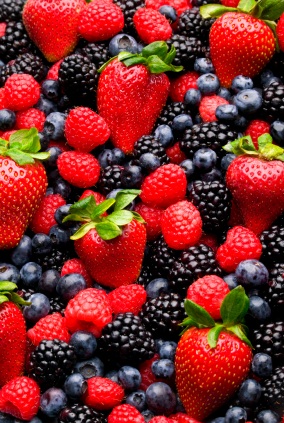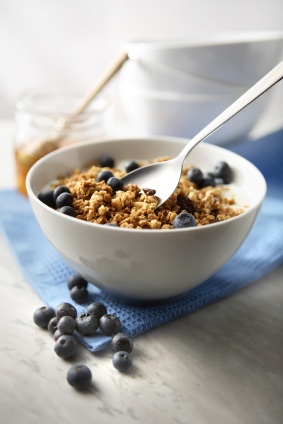As science continues to push the boundaries in a search for new ways to extend and improve the life spans of humans, it should come as no surprise that many of the cures are found in substances and organic materials that have been a part of our environment for thousands of years.
The latest example of this is the recent discovery of how flavonoids can act as a possible deterrent against some forms of cancer and possibly extend the natural lifetimes of humans. This article will briefly examine what flavonoids are, where they can be found, some of the facts and myths surrounding the usage of flavonoids and where they can be found today. It will also examine the legality of flavonoids and what possible side effects, if any, are associated with flavonoid usage.

What are Flavonoids?
Flavonoids, also referred to as bio-flavonoids, are naturally occurring biological compounds that are often found in plants. Quercetin, Kaempferol, Catechin and EGCG are examples of flavonoids. They are actually a type of anti-oxidant that act as a secondary metabolite.
This simply means that they do not participate in the actual growth process of the plants. Flavonoids come from plants and are the materials that give many plants their vibrant colors. They also participate in plant’s defensive mechanisms since they help prevent insect and microbe attacks.
Flavonoids are often found in the following food types:
Flavonoids? Get Remedies Fast!
- Blueberries
- Red beans
- Cranberries
- Blackberries
Many other types of food also contain flavonoids including red wine, many types of nuts and fruits, and vegetables.
Flavonoid History
Flavonoids actually have a long and varied history. Since as early as 1936, consumers have been ingesting flavonoids in an attempt to improve heart health and overall well being. In the early years, the primary delivery mechanism for flavonoids was citrus fruits. As research continued, however, it was found that many other food types contain flavonoids. Some additional foods containing flavonoids included chocolate and different types of tea.
The news about dark chocolate caused quite a stir as it seemed counter-intuitive that something so decadent and tasty could contain physical properties that extend the average person’s lifespan. They same process occurred when many doctors actually recommended a glass of red wine every because of the flavonoids content. At this point, many researchers are actually trying to develop a type of pill that can be taken daily as a substitute for drinking a glass or two of wine.
Flavonoid Benefits
There are many documented benefits associated with partaking in a diet that is rich in flavonoids. A few of the health benefits include:
- A reduced risk of cancer due to the powerful way they help the body build immunity and fight off unhealthy “scavengers.”
- Flavonoids have also been found to help fend off the onset of cardio-vascular diseases and may help prevent related consequences such as heart attack or stroke.
- The anti-inflammatory properties of flavonoids also help the body fight off the worst affects of allergies. This is great news for millions of people who suffer every year from the ravages of hay fever.
- Flavonoids have also been found to inhibit the formation of blood clots, which also prevents the onset of heart attack and strokes.
- Recent studies have also shown that flavonoids have properties which also prevent ulcers.
Helpful Ingredients
So what properties in flavonoids provide all of these healthful benefits to people? As a class of compounds, flavonoids have been referred to as “nature’s biological response modifiers” because of their ability to modify the body’s reaction to other compounds such as allergens, viruses, and carcinogenic properties. In addition, flavonoids act as powerful antioxidants by providing remarkable protection against oxidative and free-radical damage.
Flavonoids possess antioxidant and free radical scavenging activity, and epidemiological studies indicate that consumption of these compounds is associated with a reduced risk of cancer and cardiovascular disease. Many of the medicinal actions of foods, juices, herbs, and bee pollen are directly related to their flavonoid content. Although not considered vitamins, flavonoids have a number of nutritional functions have been described as biological response modifiers; most act as antioxidants, and some have anti-inflammatory properties.
Common Flavonoid Myths
Myth 1
Flavonoids are not as prevalent in food as they are in beverages. This statement is only true if a person’s diet only consists of hamburgers and pizza. If a balanced diet is followed, including plenty of fruits and beverages and the occasional glass of wine then it is fairly certain that plenty of flavonoids will be consumed.
Myth 2
Without additives, flavonoids will not have an impact. This is also untrue. While the environment does affect the potency of flavonoids found in many foods, it really does not impact the effectiveness of a strong tea containing flavonoids. Sometimes a single serving of tea will contain up to 200 mgs of health boosting flavonoids.
Myth 3
One flavonoid alone will make a difference. Research has found that flavonoids do work best when they are ingested in pairs or groups. This is why a diet containing many flavonoids or anti-oxidants will prove much more effective in the long run than taking a single pill.
Flavonoids Today
There are a wide variety of ways to take flavonoids today. Some of the most popular ways people take flavonoids at the most basic level is to alter what they eat and what they drink. Many people are switching to diets that are heavy in fruits, vegetables and nuts. They are supplementing this diet by enjoying the occasional piece of dark chocolate. As far as liquids are concerned, the biggest change people are making is to make sure they enjoy a cup of green tea every day.
While many teas carry certain types of anti-oxidants and flavonoids, green tea has been shown to have the best combination of flavonoids. Red wine is also now a popular supplement as a number of studies have shown that a glass or two of red wine a day provides a number of health and longevity benefits for people.

Now there is a more advanced way for consumers to ensure that they get their daily dose of flavonoids. There is a large and ever-growing market of consumers who would like to enjoy the benefits of flavonoids, but they may not have the time to gather the ingredients every day to eat a consistent diet of foods high in flavonoid content.
Mass Marketing
Now researchers are mass marketing flavonoid capsules that provide a daily dose of flavonoid content in one capsule. One example of this is the product, Isoquercetin. This product is all natural, so there are not any side effects but the long term positive effects can be dramatic.
Another example of this that is not out in mass quantities yet, but should be soon is the supplement based on red-wine called resveratrol. In certain studies, resveratrol has been shown to dramatically increase the life expectancies of mice. There is great hope for the future with this promising supplement.
Protection Benefits
It has been fairly well established that flavonoids offer a high level of protection against toxicity and a large number of potential diseases. It is important to know that in this case there may be a chance that there is too much of a good thing.
There have been a couple of studies that have shown that in certain cases, an introduction of an exceptionally large number of flavonoids and anti-oxidants have actually created some cancer cells to start growing. There is a misconception out there that a mega-dose of a “good” thing will provide more benefits. This thinking can lead to the introduction of flavonoids at a rate that can cause some pretty serious unintended consequences for the human body.
What Is the Right Amount?
So what is the proper way to take flavonoids and what is the right amount? Well, the basic answer is that it is thought that a typical person should consume 20 to 100 grams of flavonoids each day. This is the amount that is consumed in many Asian countries through their normal diets and it has been found in study after study that residents in Asian countries live longer on average than those in western countries who do not take the same amount of flavonoids in their diets.
It is entirely possible to ingest this amount of flavonoids through a daily, healthy diet. The danger actually comes with supplements. Some of the supplements on the market have doses that range from 100 to 500 grams of anti-oxidants and flavonoids daily. It is also normal for people to double up and take this dose for different types of anti-oxidants.
Healthy Diet
It would be wise for a person to eat a little citrus in the morning, followed by a snack of nuts and vegetables at mid-morning. At lunch, a serving of healthy meat with tomatoes would contain a decent amount of flavonoids, especially if this is followed by a late afternoon cup of green tea or even coffee. At dinner, another salad and then a side of vegetables will be beneficial, especially if the beverage accompanying the dinner is a glass of red-wine.
This leads to a quick note about children. Can children enjoy the same benefits of flavonoids even if they cannot enjoy the benefits of a glass of wine? The short answer to this question is a definite yes. Obviously, growing children will not need the same amount of flavonoids as an adult so if a child’s diet is altered to include a few fruits, vegetables and an occasional piece of dark chocolate instead of milk chocolate then it is a certainty that they will get the flavonoids needed to improve health and vitality.
Supplements
Of course, it is not always possible to eat all of the fruits and vegetables required to get all of the needed flavonoids. In that case, supplements offer a decent alternative. It is important, however, to pay attention to the dosage and to stay away from pumping too many flavonoids and anti-oxidants into a diet.
There are a large number of websites that sell flavonoids and anti-oxidants. Many are now produced by the same companies that produce vitamins and other supplements. Always keep in mind, however, that this is not the same as eating a diet high in flavonoids.
It is also possible to get pretty significant discounts when purchasing flavonoids online. Typically, a consumer can earn a large percentage off of their purchase by purchasing more than one bottle or two different types of flavonoids.
Flavonoids Conclusions
This concludes this brief examination of flavonoids. They have been our food sources basically since we began eating plants but it is only just now that we are truly discovering how beneficial they are to the human body. Eating a diet high in flavonoids can help a person fight off diseases and extend life. Expect more breakthroughs in the future as scientists continue to unlock the beneficial secrets of flavonoids.

3 Comments
I like to find more about flavinoids in onions
very informative ! many thanks ! viv
Dear KIM,
Thanks, your highly useful information